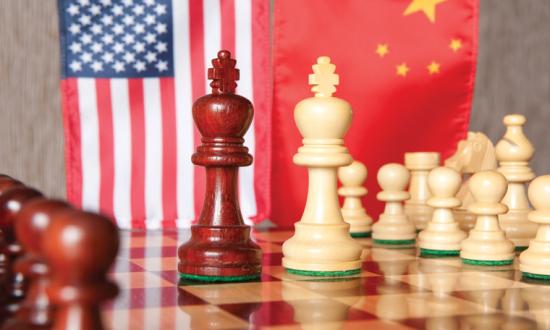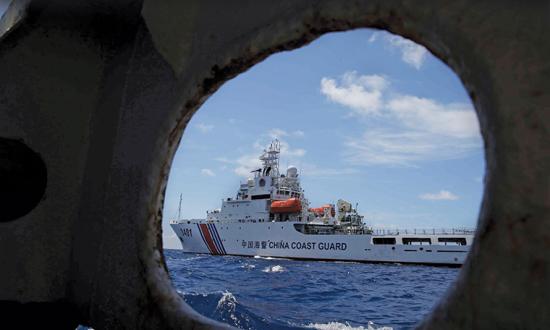With publication of his Commandant’s Planning Guidance in 2019 and Force Design 2030 in 2020, General David Berger made clear that the Marine Corps is restructuring its tables of organization and equipment and the methods in which it employs them to facilitate a strategy of deterrence against Chinese naval forces in the western Pacific. These sweeping changes signal that, for all intents and purposes, the United States is locked in a new cold war with the People’s Republic of China. As the Marine Corps begins the long work of preparing for this 21st-century rivalry, it should look to history for lessons from the Cold War that dominated the second half of the 20th century.
Though the United States and the Soviet Union squared off from 1945 to 1991, the two superpowers never fought one another directly. Instead, they clashed through client states and proxy forces. The United States could tangle with China through similar means.
Cold War Proxies
The Korean War. This was one of the first campaigns of the Cold War. In this conflict, the United States joined in a conventional war against North Korea, a Soviet client state, to defend the sovereignty of South Korea, a U.S. ally. The war escalated when China, a state aligned with the Soviet Union, intervened on behalf of North Korea to prevent it from being overrun by United Nations forces.
The war was a high-intensity conflict characterized by offensive and defensive operations by conventional forces and featured phases of dynamic maneuver, rapid advances and retreats by both sides, and finally a stalemate along static positions reminiscent of the trench warfare of World War I. At the war’s height, the United States had 326,863 troops in the theater of operations. In total, 36,516 American service members were killed and more than 100,000 were wounded.1
The war never officially ended but has remained in cease-fire status since 1953. After the 1991 collapse of the Soviet Union, China took over as the primary patron of North Korea. U.S. military forces remain in South Korea to this day, ready to provide support in the event of a resumption of hostilities by the North.
The Vietnam War. Fought over two decades, beginning in the mid-1950s, this conflict included the largest U.S. military intervention of the Cold War. In Vietnam, the United States became ensnared in a hybrid war against a Soviet client state, North Vietnam, and a proxy guerrilla force, the Viet Cong, who threatened the sovereignty of South Vietnam, a country supported by the United States. The war featured both high-intensity actions, such as the battles in the Ia Drang Valley, Operations Rolling Thunder and Linebacker, the siege of Khe Sanh, and the battle of Hue City; and low-intensity actions, such as many of the operations to locate, close with, and destroy the Viet Cong across South Vietnam and Cambodia in both conventional combat and counterinsurgency operations.
The U.S. military turned over control of combat efforts to the South Vietnamese military before withdrawing from the war zone in 1973. In 1975, Saigon was seized by communist forces, and the government of South Vietnam surrendered, ending the war. At the war’s height, the United States had a peak strength of 543,000 troops in the theater of operations. The United States suffered more than 58,000 fatal casualties in Vietnam and more than 150,000 wounded requiring hospitalization.
Operation Urgent Fury. The conflict in the Caribbean island nation of Grenada in 1983 was a small campaign in the Cold War. The United States intervened militarily to overthrow a Soviet client state in the Western Hemisphere that came to power through political subversion and revolutionary means. U.S. involvement was further motivated after an internal power struggle between Grenada’s communist leaders led to a coup and an armed confrontation that left the nation’s prime minister and at least 18 others dead. The United States intervened to evacuate American citizens caught in this chaotic situation and declared the government of Grenada hostile. Unique among other wars in this period, this low-intensity conflict featured the rapid deployment and exclusive use of airborne and amphibious forces. The campaign lasted just four days and involved only 7,300 troops. Nineteen U.S. troops were killed and 116 wounded.
China’s NExt Gambit?
Through its multibillion-dollar Belt and Road Initiative, China is assembling its own network of potential client states on five continents. As the United States and China seek to outmaneuver each another on the world stage, it is plausible that the Chinese could fund, arm, equip, and train revolutionary groups across the globe to foment instability and tie down U.S. resources in counterinsurgency campaigns. Similarly, China could prod its client states into conventional aggression against U.S. allied states to draw U.S. involvement into other potentially contentious wars. Potential areas of volatility could include wide swaths of Asia, Africa, and even Latin America.
Could the United States invoke the Monroe Doctrine in the event Chinese proxies bring instability to the Western Hemisphere? It happened in the last Cold War. The Marine Corps should continue to study the U.S.–Soviet Cold War to glean pertinent lessons that can be applied to the new cold war with China.
Proxy forces are a useful and potentially powerful tool in state-on-state intrigue. Because they offer involvement through indirect means, they provide plausible deniability, an especially attractive advantage in international competition. This is why they have been used so much in recent years by countries such as Russia and Iran—and why they might be used by the Peoples’ Republic of China in the future. Ironically, if the Marine Corps is successful in containing conventional Chinese military forces in the western Pacific, China may look for other options by which to confront the United States. The use of proxy forces may be its next gambit. If so, tomorrow’s Marines could find themselves involved in proxy campaigns similar to those their forefathers fought in the latter half of the 20th century.
1. SSgt Kathleen T. Rhem, USA, “Korean War Death Stats Highlight Modern DoD Safety Record,” American Forces Press Service, 8 June 2000, web.archive.org/web/20120114121831/http://www.defense.gov/news/newsarticle.aspx?id=45275. Reporting on the number of wounded varies, but the Department of Veterans Affairs lists 103,284 nonmortal woundings. VA Office of Public Affairs, “America’s Wars,” November 2019; www.va.gov/opa/publications/factsheets/fs_americas_wars.pdf.






